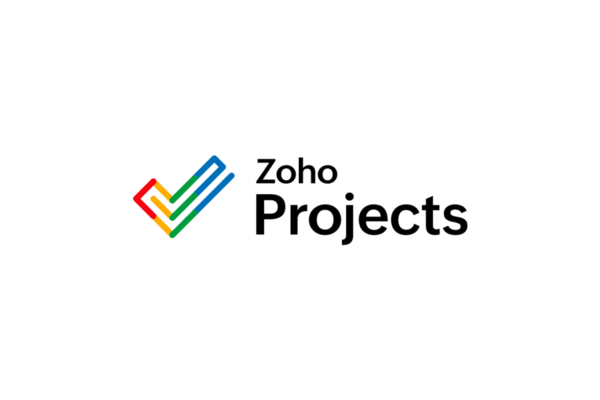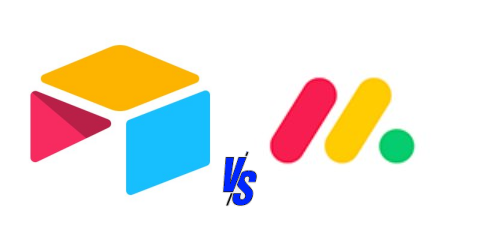Key takeaways
Introduction to the Waterfall Model
The waterfall model is a traditional project management methodology that emphasizes a linear and sequential approach, structured around well-defined phases that must be completed before progressing to the next. The waterfall model is particularly effective for projects with clear, fixed requirements and timelines. This makes it a popular choice in industries like software development, construction, and manufacturing.
Origins
The waterfall model was first introduced by Dr. Winston W. Royce in 1970, primarily for software development. Dr. Royce presented it as a way to visualize the development process in a structured manner, with distinct phases flowing downward—similar to a waterfall. Over the years, the waterfall methodology has been adapted for various industries and projects, because of its systematic approach that emphasizes clarity and thorough documentation.
How Waterfall Works
The waterfall model is organized into five key phases, each dependent on the successful completion of the previous one. Here’s what it looks like in a typical software development project setting.
Requirements phase
In this initial phase, comprehensive project details are gathered. Stakeholders define the project’s goals, deliverables, and constraints, culminating in a detailed project requirements document that serves as a roadmap. This phase is critical for understanding what is the waterfall model in practice.
Design phase
The design phase specifies the project’s architecture and details technologies, user interfaces, and integrations. This stage often includes both high-level and low-level design to ensure all requirements are met within the overall waterfall lifecycle.
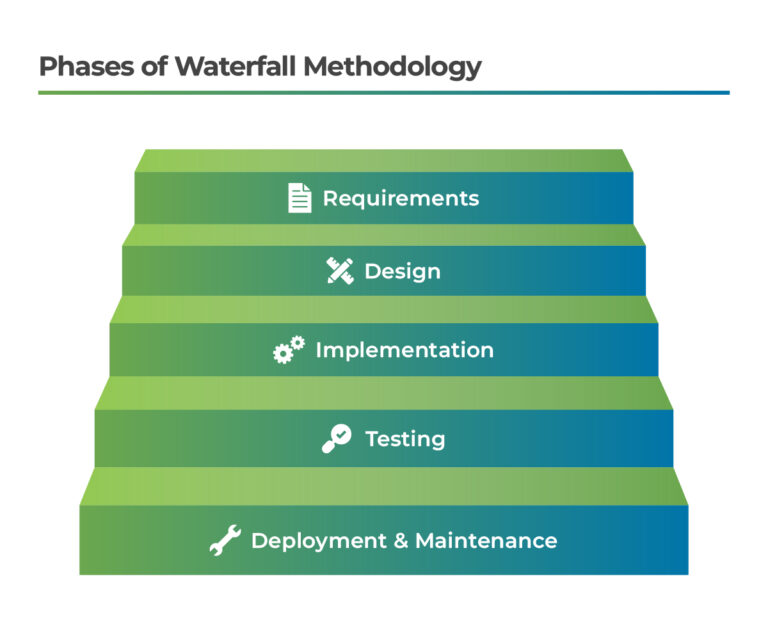
Implementation phase
During implementation, the development team translates requirements and design into a working product. This involves coding and unit testing to verify that each component meets the specified criteria, following the waterfall method.
Testing phase
After implementation, the project enters the testing phase. Quality assurance teams rigorously test the product for defects, ensuring it aligns with the documented requirements. Any issues found are logged for future reference, reinforcing the importance of thorough documentation within the waterfall approach.
Deployment phase
Once testing is complete, the product is deployed to end users. This phase involves careful planning to ensure a smooth rollout and address any final preparations necessary for user acceptance.
When Should You Use Waterfall?
While waterfall is one of many types of software development methodologies, the model is particularly suited to projects with one or more of the following characteristics:
- Clear objectives and deliverables, providing a structured path from start to finish.
- Fixed requirements (including deadlines) and minimal anticipated changes.
- Industry regulations that require strict adherence and extensive documentation.
- Tasks that must occur in a specific order, and where one task must be completed before starting another.
Types of projects or industries best suited for the waterfall model
The waterfall model is widely applied across various industries. Below are some real-world examples that illustrate how the waterfall methodology functions, highlighting its structured approach and benefits in each context.
Construction projects
Construction projects begin with gathering requirements like architectural plans and building codes, followed by design, sequential construction, and final inspections. This showcases the linear progression of the waterfall lifecycle.
Software development
Software development teams use waterfall for projects with clear requirements. In mobile app creation, the process progresses from requirements gathering through design, coding, testing, and deployment. This ensures completion of each phase and helps ensure the final product aligns with initial specifications.
Aerospace engineering
The aerospace industry employs the waterfall model for aircraft development, moving from requirements analysis to design, prototype construction, testing, and certification. Each phase must be completed in strict sequence to ensure all safety and regulatory standards are met.
Pharmaceuticals
In pharmaceuticals, the waterfall methodology is used in the development of new drugs. Teams plan then follow a linear sequence from research and preclinical testing to phased clinical trials. Each stage requires extensive documentation and approvals, ensuring safety and efficacy before the medication is released to the public.
Pros & Cons of Using Waterfall vs. Other Models
Choosing the right project management methodology is crucial to the success of any project. The waterfall model offers a structured, linear approach that can be beneficial in specific scenarios, particularly where requirements are well-defined and stability is key. But it may not be right for every project type.
It is essential to understand how waterfall compares to other top project management methodologies such as Agile, Scrum, Kanban, Spiral, and Incremental models.
Waterfall vs. Agile
Agile project management is an iterative methodology emphasizing flexibility, collaboration, and customer feedback.
Advantages vs. Agile
Disadvantages vs. Agile
Key differences
- Waterfall is linear and sequential, while Agile is iterative and flexible.
- Waterfall requires thorough upfront planning, whereas Agile allows for ongoing adjustments.
- waterfall typically delivers the final product at the end, while Agile provides incremental deliveries throughout the project.
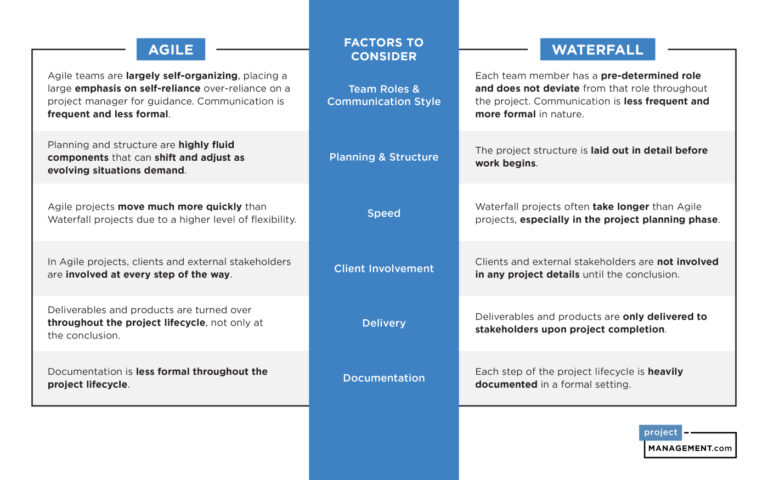
Waterfall vs. Scrum
Scrum is a framework within the Agile methodology. It focuses on iterative progress, teamwork, and flexibility.
Advantages vs. Scrum
Disadvantages vs. Scrum
Key differences
- Waterfall progresses sequentially through phases, while Scrum works in short, iterative sprints.
- Waterfall emphasizes comprehensive upfront planning, whereas Scrum allows for regular reassessment and adaptation.
- Waterfall typically has less frequent stakeholder involvement, while Scrum encourages continuous feedback and collaboration.
Waterfall vs. Kanban
Kanban is also an Agile methodology that focuses on a continuous workflow and visualizing tasks on a board. Progress toward completion is visualized as cards move from phases to phase.
Advantages vs. Kanban
Disadvantages vs. Kanban
Key differences
- Waterfall follows a fixed, sequential process, while Kanban emphasizes continuous workflow and visualization.
- Waterfall has distinct phases with specific deliverables, whereas Kanban focuses on moving tasks through stages of work.
- Waterfall typically has a fixed scope, while Kanban allows for more fluid prioritization and work management.
READ MORE: Kanban vs. Scrum
Waterfall vs. Spiral
Spiral is a risk-driven software development process, which combines elements of waterfall and iterative models.
Advantages vs. Spiral
Disadvantages vs. Spiral
Key differences
- waterfall follows a linear, sequential process, while Spiral uses iterative cycles of planning, risk analysis, engineering, and evaluation.
- Waterfall emphasizes comprehensive upfront planning, whereas Spiral allows for refinement of requirements and prototypes over time.
- Waterfall typically has less emphasis on risk management, while Spiral integrates risk analysis throughout the development process.
Waterfall vs. Incremental
The Incremental development process builds and delivers small, workable sections or increments with each section adding functionality to the final product.
Advantages vs. Incremental
Disadvantages vs. Incremental
Key differences
- waterfall delivers the entire product at once, while Incremental builds and delivers small, workable sections over time.
- waterfall has a single testing phase near the end, whereas Incremental includes testing after each increment.
- waterfall typically has less flexibility for changes, while Incremental allows for refinement based on feedback from previous stages.
Using Project Management Applications with the Waterfall Model
Modern project management tools are essential for planning and tracking waterfall-planned projects, offering features like task dependencies and timeline visualization. These tools help teams manage each phase sequentially, ensuring adherence to the structured, linear workflow of the waterfall methodology.
Waterfall with Jira
Jira is a powerful tool that supports the waterfall methodology effectively. Project managers can create a linear workflow, allowing teams to visualize the project phases and track progress seamlessly.. Jira’s features, such as task dependencies and progress tracking, ensure that each phase is completed before the next begins. This structure enhances accountability and keeps the project on track.
Waterfall with Wrike
Wrike is another project management tool that complements the waterfall methodology. Powerful Gantt charting allows teams to visualize project timelines and dependencies, making it easy to manage waterfall projects. Wrike facilitates effective collaboration, ensuring that all stakeholders are aware of progress and any potential roadblocks. This transparency is crucial for maintaining momentum and meeting deadlines.
READ MORE: Wrike vs Jira: Which Should You Use in 2024?
Waterfall with Asana
Asana is particularly well-suited for managing waterfall projects due to its structured task management capabilities. Teams can create tasks for each project phase, ensuring a clear outline of responsibilities. Asana’s Timeline view allows project managers to visualize the project as a linear progression, tracking dependencies and milestones effectively. The focus on documentation within Asana helps align all team members on project goals and timelines, contributing to the overall success of the waterfall approach.
Waterfall with Microsoft Project
Microsoft Project is designed specifically for managing complex projects and aligns well with the waterfall methodology. The tool supports Gantt charts and critical path analysis, making it easy to set timelines and manage resources. Microsoft Project allows project managers to track progress, ensuring that each phase is completed as planned. Its features are tailored for projects that require strict adherence to timelines and deliverables.
READ MORE: Best Gantt Chart Software for Project Management
Trends
As project management evolves, waterfall has adapted to meet the demands of modern industries. While its structured, linear approach remains valuable, recent trends show a shift toward more flexible methodologies. Many organizations now blend waterfall with Agile for greater adaptability, particularly in industries like construction, manufacturing, and engineering, where clear phases are essential.
Hybrid waterfall methodologies
The complexity of today’s projects has driven the adoption of hybrid models that combine waterfall’s rigorous planning with Agile’s adaptability. This approach helps teams mitigate risks and stay flexible to changing needs.
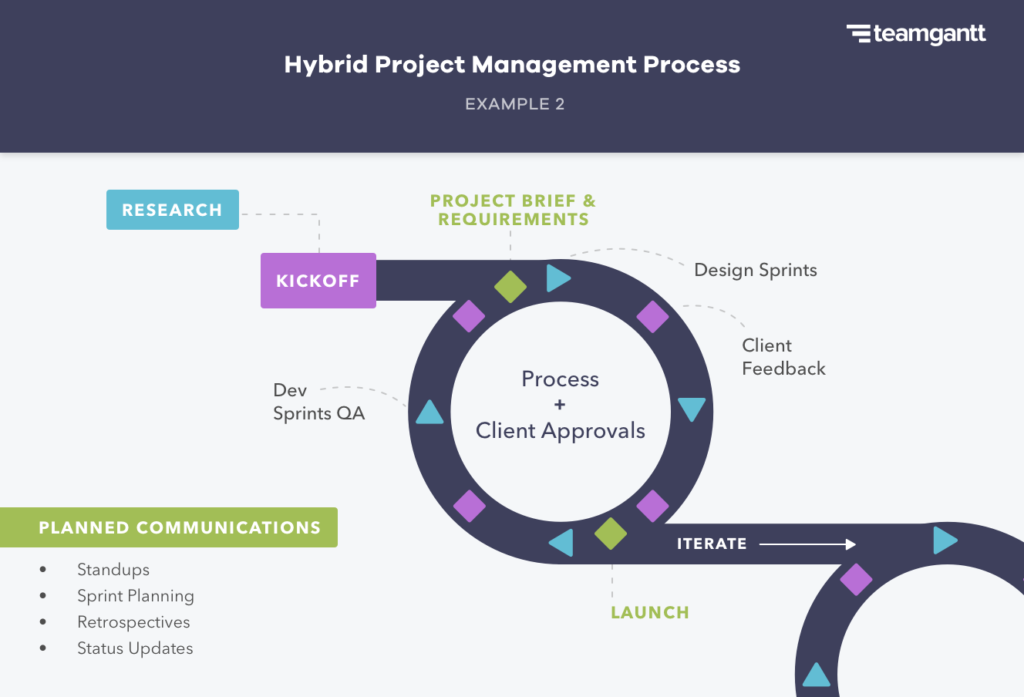
Waterfall in the cloud
Cloud-based tools have transformed how teams implement waterfall, offering real-time collaboration and easy access to shared resources. These platforms improve transparency and efficiency, making the waterfall methodology even more effective in modern project management.
FAQs
Bottom Line
The waterfall model remains a valuable approach for projects requiring detailed planning and sequential execution. By understanding its structure and ideal contexts, teams can effectively leverage this methodology to achieve project goals.
As project management evolves, the relevance of waterfall endures, particularly in industries where clarity, documentation, and regulatory adherence are essential. However, the integration of hybrid methodologies that combine waterfall with Agile flexibility allows teams to navigate the complexities of modern projects more effectively.


